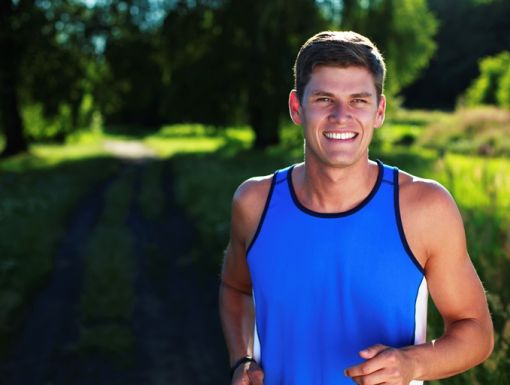
Running Safety for Children
Keep your child safe by developing good exercise and running habits including stretching, proper warm-ups, injury identification, and general running etiquette and safety.
Stretching and Warm Up
It is important to teach your child good stretching and warm up habits. Stretching is a critical part of any active exercise program. It will increase flexibility, promote efficient movement and better performance, decrease muscular soreness and prevent injury.
Good stretching technique isn't difficult or time-consuming. Concentrate on the major muscle groups used during training – hamstrings and calves are two important areas of concentration for walkers and runners. Stretch slowly and gently, avoid bouncing and perform the exercise slow and controlled, holding the stretch for 20 to 30 seconds.
Do several reps of each stretch before training along with a walk of a block or 2 to warm up and then do 20 – 30 repetitions of each stretch after exercise and cool down. Stretching after the workout is useful for enhancing flexibility as muscles are warmed up with better ability to extend.
Breathe slow and deep, not holding the breath when stretching. Make sure to drink plenty of water! Being well-hydrated will help promote circulation, elimination and help prevent muscle fatigue.
Running Injury Free
Pain is not a part of walking and running, particularly when accompanied by swelling and tenderness in a specific area. If your child complains of aches and pain, have them stop, rest, and pause training until the pain goes away. If pain, swelling and/or tenderness persists, a doctor’s attention is probably necessary.
Children for any number of reasons may be more susceptible to injury due to a growing skeletal system with open growth plates and a rapidly changing and adapting muscular system. Don’t push your kids with repetitive exercise activities and monitor your child’s overall activity level: exercise is cumulative.
Injuries can be avoided by good training habits like a gradual buildup of distance while keeping speed slow. Remember, a physician visit before start of training will alert a parent to health issues that could impact a child down the road and definitely see the physician if you know that your child has had a fall, pain and/or swelling that doesn't resolve within a few days and doesn't allow return exercise, alters the way your child walks around during the day, or keeps your child awake at night.
Follow the Rules of the Road When You Get to the Race
Children need to be educated on the “Rules of the Road”! Everyone will have more fun when mindful of others. To avoid injury, walkers should always start a race behind the runners. And, if a runner begins to walk, the runner should first run toward the edge of the pathway before stopping so that another runner behind will not be tripped up.
The order of entry puts the fastest runners at the head of the pack to avoid collisions. So walkers, please be patient and enter the race from the back. You don’t want to be knocked over by a runner or be the cause of another participant becoming injured.
Running Safely
Children should not be out training, walking, or running alone! They should be with parents or other trusted family member, friend, teacher, or coach. Children need to be aware of personal safety by training with an adult.
Children should also always let others know who they are with and when/where they will be walking and running. Safety FIRST is the BEST lesson! Have fun and be safe by thinking ahead!



